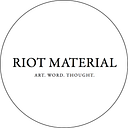La Raza And The Onetime Voice Of Chicano Activism
at the Autry Museum, Los Angeles (through February 10)
Reviewed by Nancy Kay Turner
You know something is happening but you don’t know what it is. Do you, Mr. Jones?
–Bob Dylan, “Ballad Of A Thin Man”
Those who cannot remember the past are condemned to repeat it.
–George Santayana
The sixties was a tumultuous decade, filled with assassinations, race, student and antiwar riots. This traumatic and dangerous time, when the social fabric was being torn apart, also gave birth to many civil rights movements for marginalized people such as women, gay/lesbian/transgender and people of color. This exhibition at The Autry Museum focuses on the Chicano movement specifically and on La Raza, a newspaper/zine that was crucial to exposing, through text and image, the Chicano movements struggle for social justice from 1967–77.
Recently, a treasure trove archive of 25,000 previously unseen photographs from La Raza have been donated to UCLA to mark the fiftieth anniversary of the founding of the magazine. As part of the Getty Museum’s extensive Pacific Standard Time LA/LA (Los Angeles/Latin America) series, this ambitious historical exhibition aims to elucidate the profound effect the magazine had on the community. “The editors of La Raza adopted a groundbreaking format in which photojournalism combined with art, satire, poetry and political commentary… (to) inspire the Chicano community to activism…”
The curators have divided the exhibition into the following categories: “Place and Space,” “Portraits of the Community,” “Signs of the Times,” “The Body,” “The Other, The State” and “The Principals.” All of the images are film (no digital images, though the whole archive is being digitized for conservation) and in black and white. The consistently well written and historically accurate curatorial wall text is as much the star here as the photographs, which are often shot at rallies and speeches and can appear like snapshots — not particularly aesthetic though still powerful images.
The crisp, sunlit photograph by Daniel Zapata “Young Families join La Marca de la Reconquista along a rural highway through Southern California, 1971, is painfully fresh and current in its depiction of an orderly, peaceful line of families that could just as easily be the now infamous Migrant’s Caravan of 2018 that sparked the controversial government shut down.
There are few iconic images of the stature of Dorothea Lange’s Migrant Mother, or Margaret Bourke White’s, World’s Highest Standard of Living. They were already topnotch professional photographers sent out by The WPA to document the depression — which was limitless in its possibilities. The photographers at La Raza were activist/citizen photographers, shooting on the fly frequently in dangerous and unsettled conditions — without the extensive training of the WPA photojournalists.
However, Maria Marquez-Sanchez’s Bail Bonds agency engulfed in flames, East L.A., Jan. 31, 1971 is a striking image capturing an out of control blaze, with the fire sending up bilious gusts of smoke, bellowing out like a geyser. Backlit at dusk, this conflagration is right next to the bold sign, which reads “Bail Bonds.” The subtext of this powerful image — the specter of racial profiling, unfair imprisonment and police brutality — makes this image both profound and startlingly contemporary.
Some of the most compelling images are in “The Other, The State” section. Terrifying pictures of squads of police, lined up, often in riot gear tensely waiting for action, speaks volumes. On a personal note, it reminds me of the People’s Park riot which I witnessed and where I saw police brutality up close for the very first time. Raul Ruiz captures a more relaxed police force in LA Police Officers at the Los Angeles Center demonstration circa 1970, which depicts the police lined up and ready to roll. The repetition of the uniforms moving back in a diagonal creates a memorable image. . .
To read the rest of this review, go to Riot Material magazine: https://www.riotmaterial.com/la-raza-chicano-activism/
And please follow us on Facebook: https://www.facebook.com/riotmaterial/
